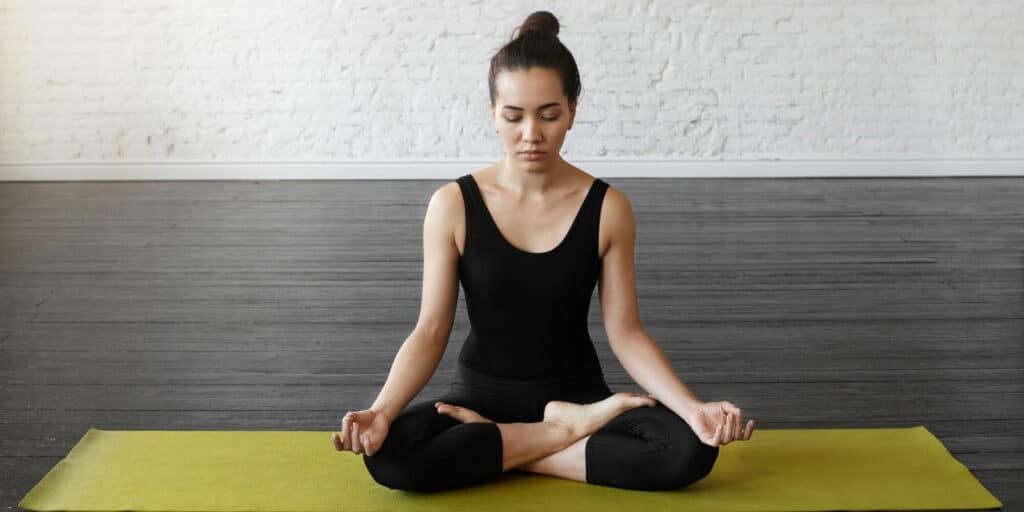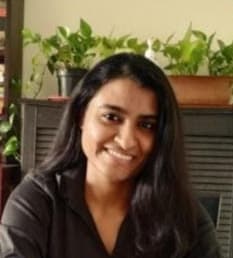Pranayama: The Aspects of Breathing
by Soha Akbar

Pranayama, as we know, deals with expanding the dimension of prana or the life force in us. It is a precise science that gives us methods to guide the flow of prana within ourselves. And how is pranayama connected to breathing? Breath is the medium of pranayama. Let us take the example of a fan. Consider the fan as your body, the switch regulator as your breath and the electricity as the prana. When you increase or decrease the regulator speed, it regulates the flow of electricity in the fan’s machine, which makes the fan move fast or slow. Similarly, the flow of breath regulates the flow of prana your body. Similarly, if you turn off the switch or turn the regulator to zero, the current stops flowing, and the fan stops moving. This signifies that once you cease to breathe, the flow of prana stops after a period of time, and you die.
Pranayama involves guiding the act of breathing and respiration in a controlled manner, and beyond its normal limit by speeding it up, slowing it down or stretching it. This helps us to experience the full range of respiration which we normally do not experience in our regular breathing patterns. The involuntary process of breathing can be made voluntary by being aware of the inhalations, exhalations and breath retention.
Pranayama involves three components: pooraka or controlled inhalation, rechaka or controlled exhalation and kumbhaka or retention. Kumbhaka is of two types: antar kumbhaka or retention after inhalation, and bahir kumbhaka or retention after exhalation. Classical Yogic texts mention that pranayama is actually kumbhaka, and not pooraka or rechaka as they are natural processes. However, in order to retain the breath, both inhalation and exhalation are necessary. Hence, all these three components constitute pranayama.
During respiration, inhalation is the active process which requires muscular effort to draw air into the lungs. Normal exhalation is a passive process which does not require any muscular effort. In pranayama, one is supposed to perform inhalations and exhalations with controlled awareness. Kumbhaka or breath retention forms the most vital part of pranayama, but in order to perform it successfully, there has to be a gradual development of control over inhalation and exhalation. Therefore, for beginners in pranayama, controlled inhalation and exhalation are emphasized to strengthen the lungs and balance the nervous system. Usually the exhalations are twice the length of inhalations.
The initial practices of pooraka and rechaka influence the flow of prana in the nadis or energy channels of the body, purifying, balancing and activating them. This in turn induces physical and mental stability, preparing the practitioner for the further practices of kumbhaka. Kumbhaka is difficult for a beginner, but becomes easier, longer and smoother through regular practice. Modulating the processes of pooraka, rechaka and kumbhaka forms the various pranayama techniques.
Conscious breathing is the first important step in pranayama. Let us see the importance of breathing deep, slow and in a controlled manner. How we breathe can have a significant impact on the state of the mind and body. Shallow breathing does not provide us with enough oxygen to function properly. Consistent shallow breathing results in stagnant air and waste residue to accumulate in the lungs over time. On the other hand, deep breathing keeps the lungs healthier by ensuring proper oxygen circulation through them and nourishing them.
Deep inhalations lift and energize us, while deep exhalations stabilize and ground us. In simple terms, inhalations are neurologically tied to stress response, while exhalations are neurologically tied to the relaxation response in the brain. To understand this through examples, remember a time when you were startled or shocked by something; you must have taken a sharp, deep inward breath. Now think of a time when you escaped a difficult or dangerous situation; you must have taken a deep sigh of relief, a deep relaxing exhalation. Deep breathing is one of the best ways to relax your body and mind, as it sends a message to the brain to calm down. The brain, in turn, sends this message to the body. It also slows down the heartbeat, relaxes the heart muscles, stabilizes the blood pressure and lowers the overall stress level.
Hatha Yoga Pradipika verse 2 states:
छले वाते छलं छित्तं निश्छले निश्छलं भवेत|
योगी सथाणुत्वमाप्नोति ततो वायुं निरोधयेत||
It means that respiration being disturbed, the mind becomes disturbed. By restraining respiration, the Yogi gets steadiness of mind.
Let’s understand kumbhaka now. During breath retention, the oxygen levels in the body fall and the carbon dioxide levels increase. The purpose of this is to train the nervous system to train higher levels of carbon dioxide in the body. But why do we need to do that? In the brain, there are many blood capillaries that remain inactive, and become active only when more blood is required by the brain. Increased levels of carbon dioxide stimulate these capillaries to dilate, and this improves blood circulation in the brain. It also improves the carbon dioxide tolerance level of the body. This allows us to regulate our breathing so that our bodies have more carbon dioxide available during exertion and reduce our breathlessness at that time.
However, one should be extremely careful while practising kumbhaka and not force oneself in any way. The ratios of inhalation, exhalation and retention for each pranayama technique should be followed as prescribed, and under the guidance of an expert teacher. Pranayama performed systematically with the correct techniques can improve the quality of one’s life, but if performed incorrectly, it can have adverse effects on the practitioner. Hatha Yoga Pradipika verse 18 states:
युक्तं युक्तं तयजेद्वायुं युक्तं युक्तं छ पूरयेत |
युक्तं युक्तं छ बध्नीयादेवं सिद्धिमवाप्नुयात ||
It means that the air should be skilfully inhaled, exhaled and retained so that perfection or siddhi is attained.
Friends, there are numerous rules regarding pranayama in the traditional yogic texts. For our well-being, it is imperative that we remember to practise in moderation and understand the dos and don’ts of each pranayama technique. If you wish to take up the advance practices, it is essential to get the guidance of a competent teacher. If you get a chance, learn from the teachers of Sayujya Yoga, offering one of the best Yoga Teacher Trainings in India. Their Yoga course in Mumbai covers Pranayama in detail.
I will end this article with a quote by BKS Iyengar: “As a fire blazes brightly when the covering of ash over it is scattered by the wind, the divine fire within the body shines in all its majesty when the ashes of desire are scattered by the practice of pranayama.”
About the Author

Sohaila Akbar
Sohaila is a Yoga teacher, keen on bringing about positive changes in the lives of others through the knowledge that she has received from her teachers. Prior to this she was a school teacher working towards imparting academic, social and ecological knowledge to young learners. Sohaila is an avid reader of books and have an undying love for fiction. She prefers paperbacks and hardcovers over e-books anyday. She loves travelling, and a good cup of coffee is always welcome!
